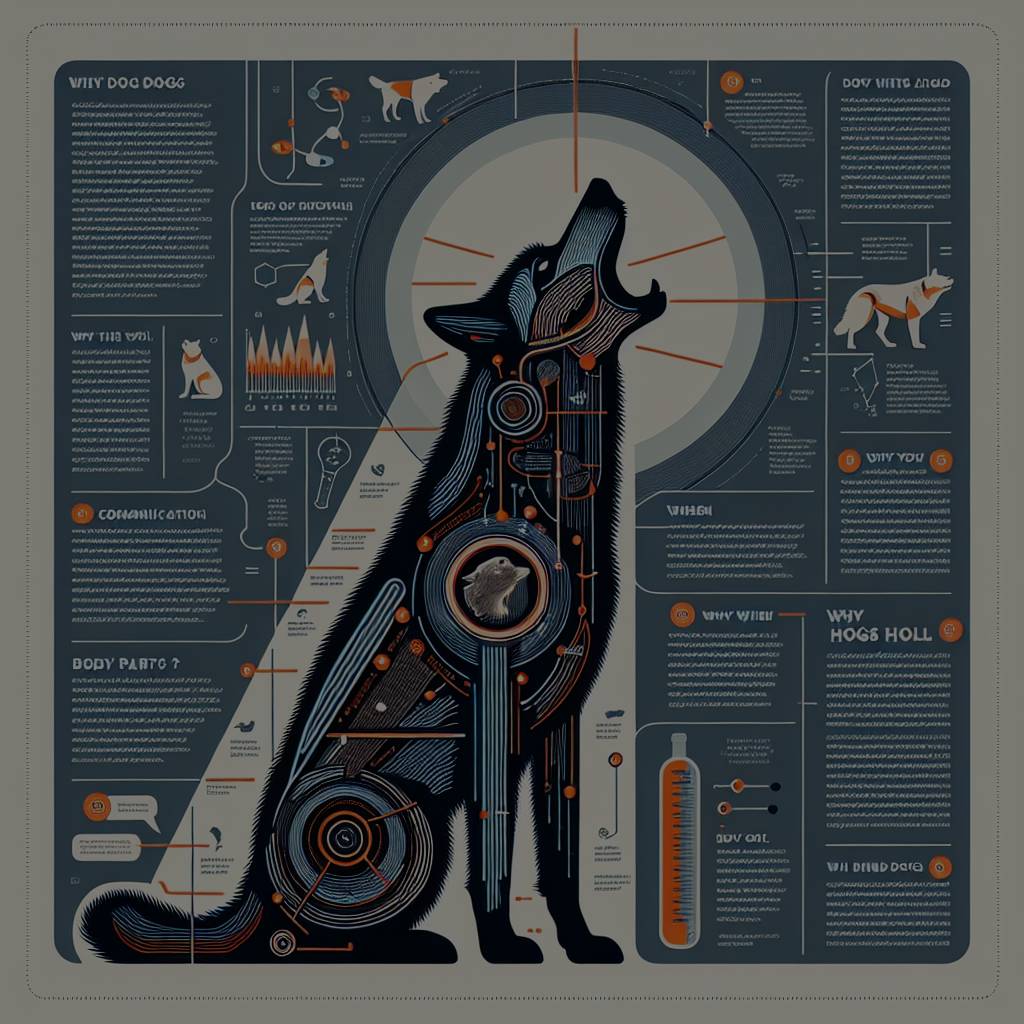
Howling is a behavior commonly associated with wolves, but domestic dogs also exhibit this vocalization. The science behind canine howling is a fascinating subject that delves into the physiology, evolution, and communication signals of these animals. Understanding why dogs howl can shed light on their social behavior and relationships with humans.
Understanding the Physiology of Canine Howling
The act of howling in dogs involves a complex interplay of vocal cords, larynx, and air passages. When a dog howls, the sound is produced by air passing through the vocal cords and resonating in the larynx. The unique structure of a dog’s vocal cords allows them to produce a wide range of sounds, from high-pitched barks to deep, haunting howls. Different breeds of dogs may have variations in their howling abilities due to differences in their anatomical features.
Aside from the physical aspect of howling, the emotional state of a dog also plays a role in their vocalizations. Dogs may howl in response to loneliness, anxiety, or even as a way to communicate with other dogs. Howling can serve as a form of self-expression for dogs, allowing them to convey their emotions and needs to others. Understanding the physiological processes behind canine howling can help dog owners interpret their pet’s vocalizations and respond accordingly.
The Role of Evolution in Canine Howling Behavior
The behavior of howling in dogs can be traced back to their wild ancestors, such as wolves. Wolves use howling as a means of communication with their pack members over long distances. This behavior has been carried over to domestic dogs, who may howl to signal their presence or location to other dogs. The evolutionary roots of howling demonstrate the importance of communication in the social structure of canines.
Studies have shown that certain breeds of dogs are more prone to howling than others, which may be attributed to their genetic predisposition. For example, breeds such as Siberian Huskies and Alaskan Malamutes are known for their howling tendencies, reflecting their heritage as sled dogs who needed to communicate effectively in harsh environments. Evolution has shaped the behavior of howling in dogs, highlighting the adaptive advantages of vocal communication in their survival and social interactions.
Unraveling the Communication Signals in Canine Howls
When a dog howls, they are sending out signals that can convey various messages to other dogs and humans. Howling can serve as a form of territorial marking, with dogs howling to assert their presence in a particular area. Dogs may also howl in response to sirens or other loud noises, as a way to join in the communal vocalization. Understanding the different contexts in which dogs howl can help decipher the underlying messages they are trying to communicate.
The pitch, frequency, and duration of a dog’s howl can provide valuable insights into their emotional state and intentions. For example, a high-pitched, short howl may indicate excitement or anticipation, while a low, prolonged howl could signal distress or discomfort. By paying attention to these subtle cues in a dog’s howling behavior, pet owners can better understand their furry companions and strengthen their bond through effective communication.
In conclusion, the science behind canine howling is a multifaceted subject that encompasses the physiology, evolution, and communication signals of dogs. By delving into the intricacies of why dogs howl, we can gain a deeper appreciation for their social behavior and innate instincts. Understanding the reasons behind a dog’s howling can enhance our relationship with them and foster a stronger connection based on mutual understanding and communication.










